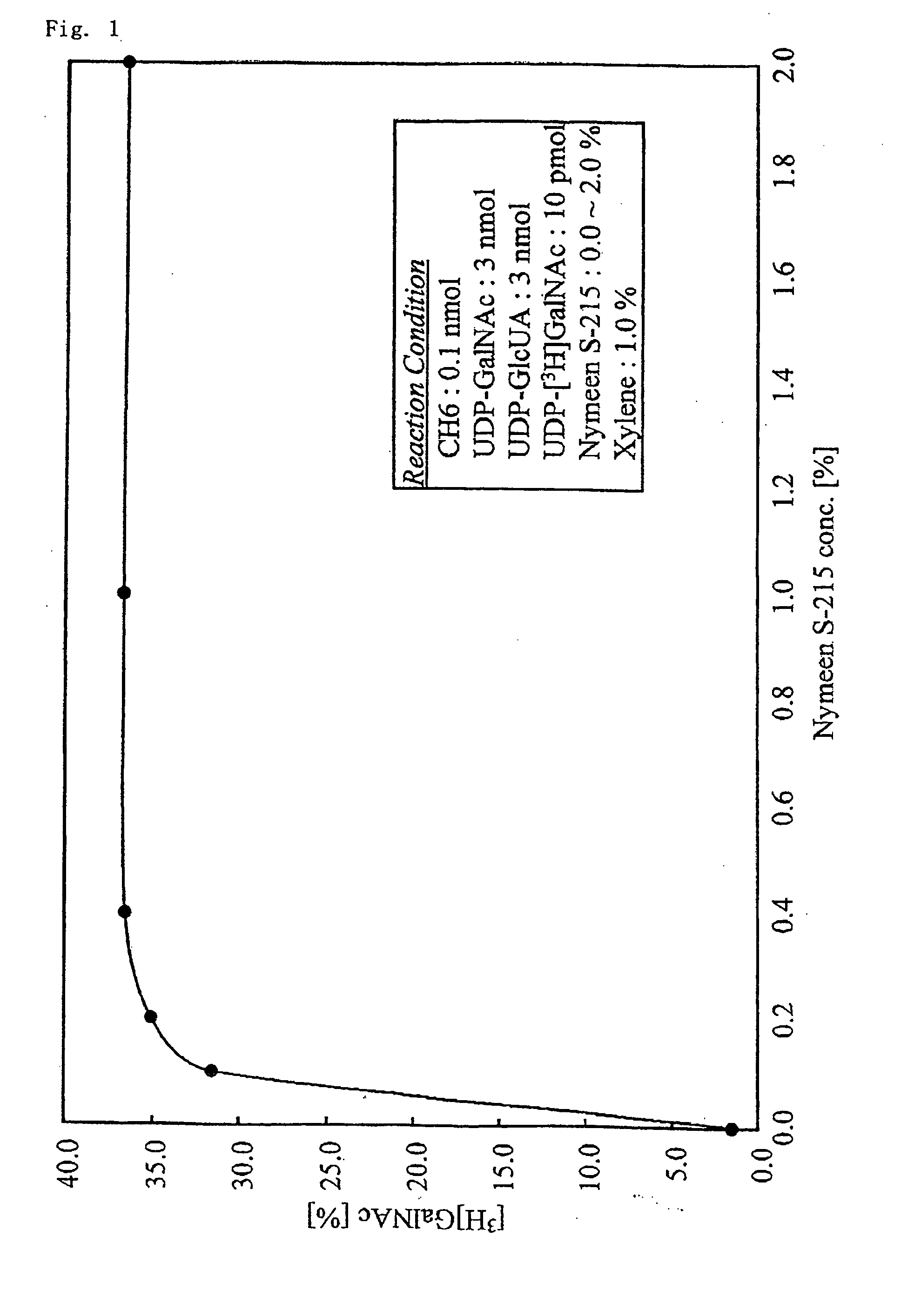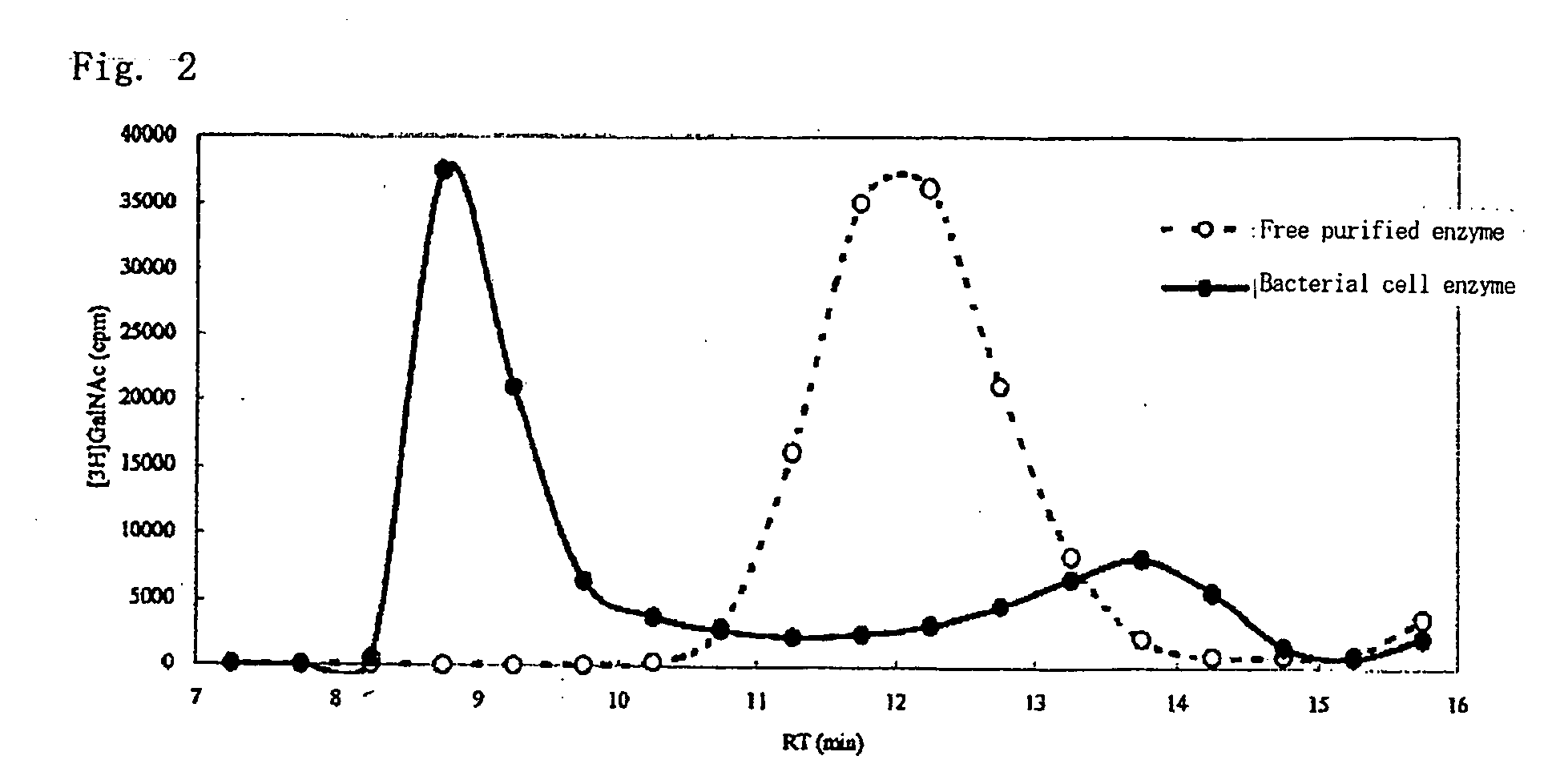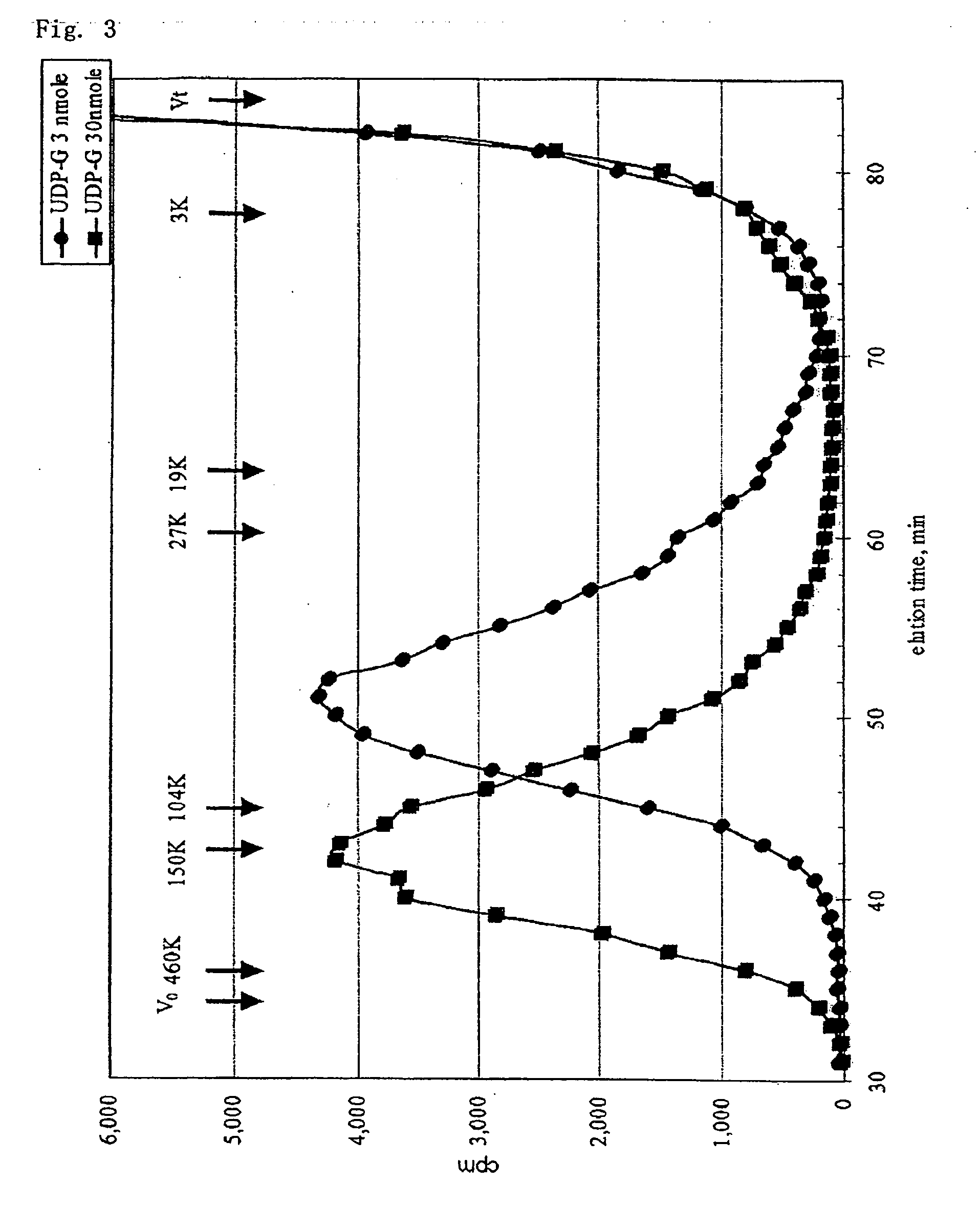Long-chain chondroitin sugar chain and method for producing the same and method for promoting synthesis of chondroitin
a technology of chondroitin and sugar chain, which is applied in the direction of enzymology, organic chemistry, transferases, etc., can solve the problems of insufficient use of enzymes to achieve the efficient industrial the production of ch sugar chains having only about 20,000 sugar chains, and achieves the effect of efficient production
- Summary
- Abstract
- Description
- Claims
- Application Information
AI Technical Summary
Benefits of technology
Problems solved by technology
Method used
Image
Examples
example 1
Preparation of a Bacterial Cell Enzyme
[0084]According to the method described in Japanese Patent Application No. 2003-199583, the gene of the CH polymerase (K4CP) enzyme derived from E. coli and an expression vector were prepared. the plasmid pTrcHis (manufactured by Invitrogen Corporation) was used as the expression vector. The expression vector obtained by the method was introduced to E. coli. The E. coli was cultured at 37° C. in an ampicillin-containing LB medium until absorbance of the culture medium reached about 0.6 at a wavelength of 600 nm. β-isopropylthiogalactoside (IPTG), which is an expression induction molecule, was added to the culture medium in such an amount that attains a final concentration of 1 mM, and culture was further performed at 37° C. for 3 hours to induce an enzyme expression. 1 ml of the culture medium was taken and transferred to a centrifugation tube to undergo centrifugation at 10,000 rpm for 1 minute. After the supernatant was discarded, a cell preci...
example 2
Preparation of CH Hexasaccharide (CH6)
[0085]To a CH obtained by chemical desulfation (manufactured by SEIKAGAXU CORPORATION), hyaluronidase derived from sheep testis (manufactured by Sigma-Aldrich Corporation) was added, and the limited degradation was performed in a sodium acetate buffer solution containing NaCl, whereby CH oligosaccharides composed of the even number saccharides and having a GlcUA residue at a non-reducing end thereof were obtained. The obtained oligosaccharides were purified by gel filtration and ion-exchange column to collect a fraction corresponding to CH6. The obtained fraction was freeze-dried and subjected to the determination of the uronic acid content (carbazole method), HPLC (GPC), MALDI-TOF-MS, and disaccharide analysis after chondroitinase treatment. As a result, it was confirmed that the obtained fraction was a hexasaccharide having a GalNAc residue at a reducing end thereof and a GlcUA residue at a non-reducing end thereof.
example 3
Evaluation of the Concentration of Surfactants
[0086]To the bacterial cell enzyme obtained in Example 1, 50 mM of Tris-HCl (pH of 7.2) buffer solution containing 20 mM of MnCl2, 150 mM of NaCl, 0.1 nmole of CH6, 3 nmolofUDP-GalNAc, 0.2 μCi of UDP-[3H]GalNAc, and 3 nmol of UDP-GlcUA, and a surfactant (Nymeen S-215; manufactured by NOF CORPORATION) at a final concentration of 0, 0.1, 0.2, 0.4, 1.0, or 2.0% was added and suspended. Each of the suspensions was shaken at 30° C. for 15 hours. After the reaction, each of the suspensions was heat-treated for 10 minutes in boiling water, and then centrifuged at 15,000 rpm for 5 minutes to remove a precipitate. Each of the supernatants was subjected to gel filtration using Superdex peptide HR 10 / 30 column (manufactured by Amersham Biosciences Co., Ltd.). The sugar chains in each of the eluted solutions were detected based on the absorbance at 225 nm.
[0087]An eluted fraction which corresponds to the absorption peak residing in a polymer region ...
PUM
| Property | Measurement | Unit |
|---|---|---|
| glucuronic acid | aaaaa | aaaaa |
| organic | aaaaa | aaaaa |
| concentration | aaaaa | aaaaa |
Abstract
Description
Claims
Application Information
 Login to View More
Login to View More - R&D
- Intellectual Property
- Life Sciences
- Materials
- Tech Scout
- Unparalleled Data Quality
- Higher Quality Content
- 60% Fewer Hallucinations
Browse by: Latest US Patents, China's latest patents, Technical Efficacy Thesaurus, Application Domain, Technology Topic, Popular Technical Reports.
© 2025 PatSnap. All rights reserved.Legal|Privacy policy|Modern Slavery Act Transparency Statement|Sitemap|About US| Contact US: help@patsnap.com



